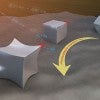
Shape matters for light-activated nanocatalysts
Points matter when designing nanoparticles that drive important chemical reactions using the power of light, according research from Rice University's Laboratory for Nanophotonics.

Shape matters for light-activated nanocatalysts
Points matter when designing nanoparticles that drive important chemical reactions using the power of light, according research from Rice University's Laboratory for Nanophotonics.

Fast calculation dials in better batteries
A simpler and more efficient way to predict performance will lead to better batteries, according to Rice University engineers.

Largest gift in Rice history establishes The Welch Institute
The Robert A. Welch Foundation announces the largest single gift in the history of Rice University, $100 million, to establish The Welch Institute for world-leading advanced materials research.
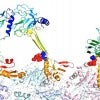
Protein ‘chameleon’ colors long-term memory
Researchers model the binding structures of actin and associated proteins they believe are responsible for the formation of longterm memory.
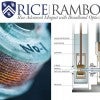
Rice’s RAMBO-II: A sequel better than the original
First-of-its-kind spectrometer is getting stronger magnets, wider range of lasers.
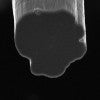
No limit yet for carbon nanotube fibers
Rice University researchers report advances in their quest to make the best carbon nanotube fibers for industry.

People, papers and presentations Aug 10, 2021
Eden King, the Lynnette S. Autry Professor of Psychological Sciences at Rice, has been named a member of the Society for Human Resource Management's Blue Ribbon Commission on Racial Equity, which aims to improve racial equity in the workplace.
Martí named fellow of the Royal Society of Chemistry
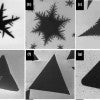
Study: Mapping crystal shapes could fast-track 2D materials
Materials scientists at Rice University and the University of Pennsylvania are calling for a collective, global effort to fast-track the mass production of 2D materials like graphene and molybdenum disulfide.

Rice lab helps power electric car research
Rice University researchers will contribute to a new project to make better batteries for electric vehicles.
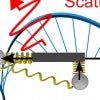
Cartwheeling light reveals new optical phenomenon
Researchers at Rice University have discovered details about a novel type of polarized light-matter interaction with light that literally turns end over end as it propagates from a source.
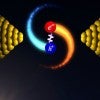
Rice lab’s bright idea is pure gold
Physicists discover plasmonic metals can produce “hot carriers” that emit unexpectedly bright light in nanoscale gaps between electrodes.
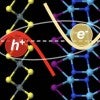
Excitons form superfluid in certain 2D combos
Mixing and matching computational models of 2D materials led scientists at Rice University to the realization that excitons can be manipulated in new and useful ways.
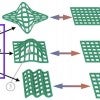
Lab makes 4D printing more practical
Soft robots and biomedical implants that reconfigure themselves upon demand are closer to reality with a method developed at Rice to print shapeshifting materials.
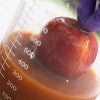
Egg-based coating preserves fresh produce
Eggs that would otherwise be wasted can be used as the base of an inexpensive coating to protect fruits and vegetables, according to Rice University researchers.